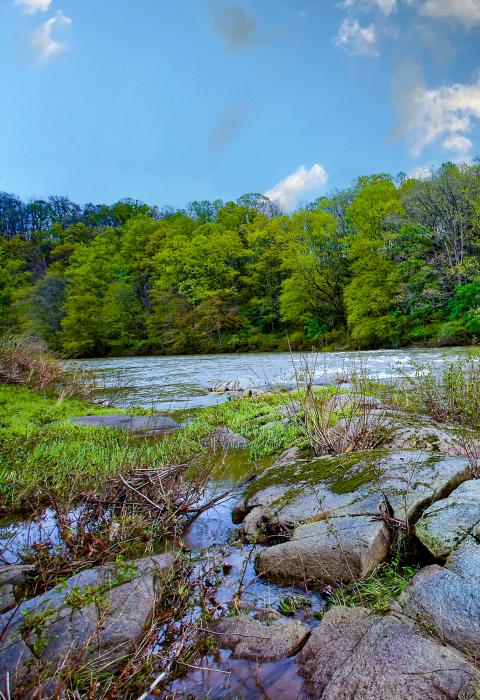New River
North Carolina
Rugged hillsides, pastoral meadows, and bucolic farmlands surround the oldest river in North America. The river's waters are slow and placid; its banks are fertile and covered with wildflowers. Fishing is good. Narrow and winding mountain roads dotted with small farms, churches, and country stores give an old-fashioned charm. New River State Park provides access and spots for camping, canoeing, picnicking, and fishing.
Designated Reach
April 13, 1976. The South Fork from its confluence with Dog Creek downstream 22 miles to the confluence with the North Fork. The main stem from the confluence of the North and South Forks with Dog Creek downstream approximately 4.5 miles to the Virginia state line.
Outstandingly Remarkable Values
Fish
A wide variety of game and nongame fish, both warm and cold-water types, including nine fish on the state's rare and/or endangered list, and an endangered aquatic snail are found in the New River. The rare or endangered aquatic species include the New River shiner, Kanawha minnow, bigmouth chub, tongue-tied minnow, bluntnose minnow, Kanawha darter, blackside darter, sharpnose darter, and flathead catfish. These species occur other places in the upper watershed also, but do not occur in any other watershed of North Carolina. The New River contains the finest smallmouth bass and rock bass riverine habitat to be found in the state.
Geology
The New River lies within the Blue Ridge province of the Appalachian Mountain System. The presence of ancient lava flows and other volcanics that now appear as amphibolite ledges and cliffs along the South Fork of the New River are some of the most scenic and unique geologic features.
The New River flows through some of the oldest rocks in the United States. Radiometric dating methods have placed the age of some of these rocks near 1.1 billion years old. In addition to their extreme age, these rocks are quite complex having all undergone metamorphosis two or three times in the past.
History
The first settlers in the South Fork New River Valley probably arrived in the late 1760’s or early 1770’s. Tributary creeks of the river were used as homesteads. Although the river aided the early settlers in providing their families with the essentials of life and transportation, it also hampered development.
Prehistory
Recovered projectile points that date back several thousand years indicate that the New River was a major migration route and represents successive levels of Indian development from Paleo-Indian times to the arrival of the Europeans in the 15th and 16th centuries.

